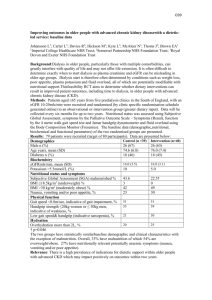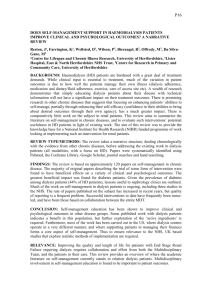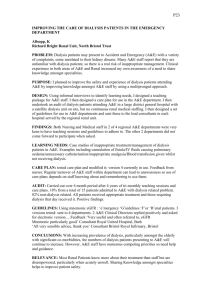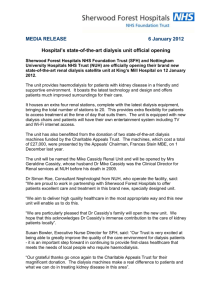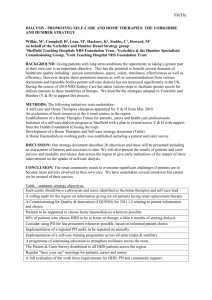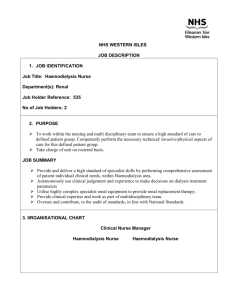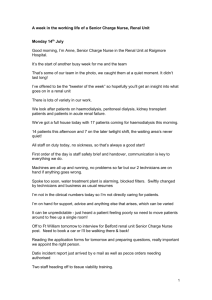SS_BRS_ 15 - University of Hertfordshire
advertisement
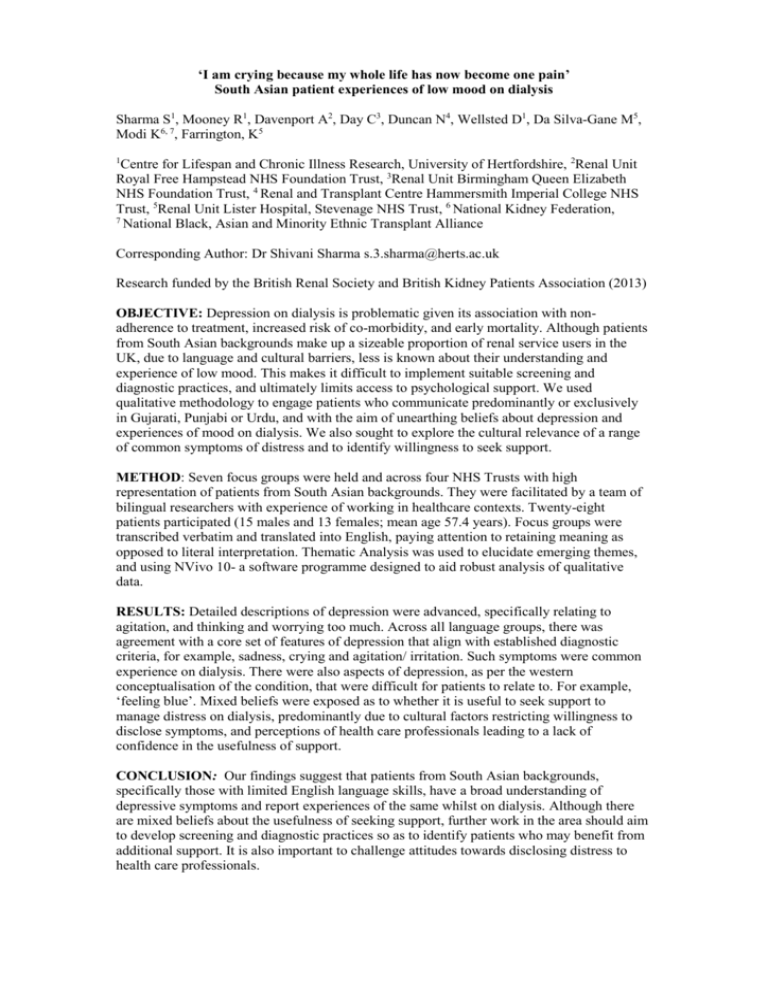
‘I am crying because my whole life has now become one pain’ South Asian patient experiences of low mood on dialysis Sharma S1, Mooney R1, Davenport A2, Day C3, Duncan N4, Wellsted D1, Da Silva-Gane M5, Modi K6, 7, Farrington, K5 1 Centre for Lifespan and Chronic Illness Research, University of Hertfordshire, 2Renal Unit Royal Free Hampstead NHS Foundation Trust, 3Renal Unit Birmingham Queen Elizabeth NHS Foundation Trust, 4 Renal and Transplant Centre Hammersmith Imperial College NHS Trust, 5Renal Unit Lister Hospital, Stevenage NHS Trust, 6 National Kidney Federation, 7 National Black, Asian and Minority Ethnic Transplant Alliance Corresponding Author: Dr Shivani Sharma s.3.sharma@herts.ac.uk Research funded by the British Renal Society and British Kidney Patients Association (2013) OBJECTIVE: Depression on dialysis is problematic given its association with nonadherence to treatment, increased risk of co-morbidity, and early mortality. Although patients from South Asian backgrounds make up a sizeable proportion of renal service users in the UK, due to language and cultural barriers, less is known about their understanding and experience of low mood. This makes it difficult to implement suitable screening and diagnostic practices, and ultimately limits access to psychological support. We used qualitative methodology to engage patients who communicate predominantly or exclusively in Gujarati, Punjabi or Urdu, and with the aim of unearthing beliefs about depression and experiences of mood on dialysis. We also sought to explore the cultural relevance of a range of common symptoms of distress and to identify willingness to seek support. METHOD: Seven focus groups were held and across four NHS Trusts with high representation of patients from South Asian backgrounds. They were facilitated by a team of bilingual researchers with experience of working in healthcare contexts. Twenty-eight patients participated (15 males and 13 females; mean age 57.4 years). Focus groups were transcribed verbatim and translated into English, paying attention to retaining meaning as opposed to literal interpretation. Thematic Analysis was used to elucidate emerging themes, and using NVivo 10- a software programme designed to aid robust analysis of qualitative data. RESULTS: Detailed descriptions of depression were advanced, specifically relating to agitation, and thinking and worrying too much. Across all language groups, there was agreement with a core set of features of depression that align with established diagnostic criteria, for example, sadness, crying and agitation/ irritation. Such symptoms were common experience on dialysis. There were also aspects of depression, as per the western conceptualisation of the condition, that were difficult for patients to relate to. For example, ‘feeling blue’. Mixed beliefs were exposed as to whether it is useful to seek support to manage distress on dialysis, predominantly due to cultural factors restricting willingness to disclose symptoms, and perceptions of health care professionals leading to a lack of confidence in the usefulness of support. CONCLUSION: Our findings suggest that patients from South Asian backgrounds, specifically those with limited English language skills, have a broad understanding of depressive symptoms and report experiences of the same whilst on dialysis. Although there are mixed beliefs about the usefulness of seeking support, further work in the area should aim to develop screening and diagnostic practices so as to identify patients who may benefit from additional support. It is also important to challenge attitudes towards disclosing distress to health care professionals.

